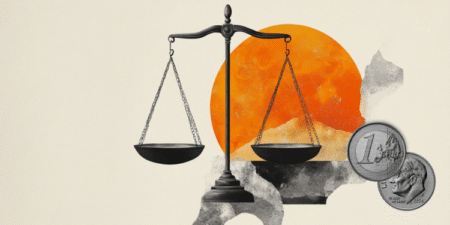- The Indian Rupee moves higher against the US Dollar to near 85.65.
- India is in no rush to sign a trade pact with the US.
- FOMC minutes suggest that officials are worried about tariff-led inflation.
The Indian Rupee (INR) gains against the US Dollar (USD) during the European trading session on Thursday. The USD/INR pair trades lower to near 85.75, while investors await the confirmation of the trade deal between India and the United States (US) to gauge direction.
Last week, US President Donald Trump expressed more than once that Washington is close to striking a deal with India. However, comments from Indian Commerce and Supply Minister Piyush Goyal indicated that New Delhi is not in a rush to sign the deal, stating that an agreement will not close until it gains confidence that the pact is in the national interest.
“India does not negotiate under deadlines,” Goyal said and added, “We negotiate keeping national interest in mind, and national interest is paramount in all our engagements across the world.”
A report from NDTV showed on Thursday that both nations aim to lower overall duty barriers to promote a healthy competitive environment. Additionally, New Delhi was seeking to safeguard its agriculture sector and labor-intensive companies, such as leather, footwear, and clothes, from exposure to competition from US companies.
A delay in the confirmation of a trade deal between India and the US has weighed on Indian equity markets. Nifty50 slides almost 100 points below 25,400, while Sensex30 declines 0.3% below 83,300.
Another reason behind the strength in the Indian Rupee is growing hopes of a decline in the Oil price in the near term, as the OPEC+ announces a bigger-than-expected increase in Oil production, which is expected to support the Indian Rupee. Currencies from nations that depend largely on Oil imports, such as the Indian Rupee, perform strongly in a lower Oil price environment.
Daily digest market movers: US Dollar stabilizes while Fed members argue against interest rate cuts in near term
- The Indian Rupee moves higher against the US Dollar. While the US Dollar trades subduedly amid uncertainty surrounding the tariff policy.
- On Wednesday, US President Trump revealed another batch of reciprocal tariffs for seven countries that failed to secure a trade deal during the 90-day pause period. However, the impact of the announcement of fresh tariff rates is expected to be limited as it doesn’t contain countries with whom the US does meaningful business.
- Considering the current status of trade negotiations by Washington with nations like the Eurozone, China, Canada, and Mexico, US President Trump is unlikely to slap hefty tariffs on them. So far, major trading partners of the US that have been slapped with reciprocal tariffs are Japan and South Korea.
- Meanwhile, Donald Trump has also stated that proposed 50% tariffs on copper imports will become effective from August 1, the same date when his reciprocal tariffs will be executed, while claiming the scope of the base metal in a number of companies.
- On the monetary policy front, the Federal Open Market Committee (FOMC) minutes of the June 17-18 policy meeting has signaled that a majority of Federal Reserve (Fed) officials believe that interest rates cuts are appropriate later this year if tariff-driven inflation proved to be “limited and temporary”, Reuters reported. The minutes also stated that officials felt borrowing rates are not far above the neutral level. Only a “couple of participants noted they would be open to considering a rate cut as soon as the July meeting.”
- According to the CME FedWatch tool, the Fed is almost certain to leave interest rates in the current range of 4.25%-4.50% in the policy meeting later this month.
US Dollar PRICE Today
The table below shows the percentage change of US Dollar (USD) against listed major currencies today. US Dollar was the strongest against the Swiss Franc.
| USD | EUR | GBP | JPY | CAD | AUD | NZD | CHF | |
|---|---|---|---|---|---|---|---|---|
| USD | -0.07% | -0.16% | 0.01% | -0.08% | -0.38% | -0.22% | 0.12% | |
| EUR | 0.07% | -0.10% | 0.09% | 0.00% | -0.28% | -0.16% | 0.17% | |
| GBP | 0.16% | 0.10% | 0.18% | 0.11% | -0.17% | -0.04% | 0.27% | |
| JPY | -0.01% | -0.09% | -0.18% | -0.09% | -0.38% | -0.18% | -0.00% | |
| CAD | 0.08% | -0.01% | -0.11% | 0.09% | -0.26% | -0.17% | 0.17% | |
| AUD | 0.38% | 0.28% | 0.17% | 0.38% | 0.26% | 0.09% | 0.44% | |
| NZD | 0.22% | 0.16% | 0.04% | 0.18% | 0.17% | -0.09% | 0.33% | |
| CHF | -0.12% | -0.17% | -0.27% | 0.00% | -0.17% | -0.44% | -0.33% |
The heat map shows percentage changes of major currencies against each other. The base currency is picked from the left column, while the quote currency is picked from the top row. For example, if you pick the US Dollar from the left column and move along the horizontal line to the Japanese Yen, the percentage change displayed in the box will represent USD (base)/JPY (quote).
Technical Analysis: USD/INR stays below 20-day EMA
USD/INR falls to near 85.70 at open on Thursday. The pair faces a sell-off above the 20-day Exponential Moving Average (EMA), which trades around 85.87, suggesting selling pressure at higher levels.
The 14-day Relative Strength Index (RSI) falls below 50.00. A fresh bearish momentum would emerge if the RSI breaks below 40.00.
Looking down, the May 27 low of 85.10 will act as key support for the major. On the upside, the June 24 low at 86.42 will be a critical hurdle for the pair.
Tariffs FAQs
Tariffs are customs duties levied on certain merchandise imports or a category of products. Tariffs are designed to help local producers and manufacturers be more competitive in the market by providing a price advantage over similar goods that can be imported. Tariffs are widely used as tools of protectionism, along with trade barriers and import quotas.
Although tariffs and taxes both generate government revenue to fund public goods and services, they have several distinctions. Tariffs are prepaid at the port of entry, while taxes are paid at the time of purchase. Taxes are imposed on individual taxpayers and businesses, while tariffs are paid by importers.
There are two schools of thought among economists regarding the usage of tariffs. While some argue that tariffs are necessary to protect domestic industries and address trade imbalances, others see them as a harmful tool that could potentially drive prices higher over the long term and lead to a damaging trade war by encouraging tit-for-tat tariffs.
During the run-up to the presidential election in November 2024, Donald Trump made it clear that he intends to use tariffs to support the US economy and American producers. In 2024, Mexico, China and Canada accounted for 42% of total US imports. In this period, Mexico stood out as the top exporter with $466.6 billion, according to the US Census Bureau. Hence, Trump wants to focus on these three nations when imposing tariffs. He also plans to use the revenue generated through tariffs to lower personal income taxes.
Read the full article here
















